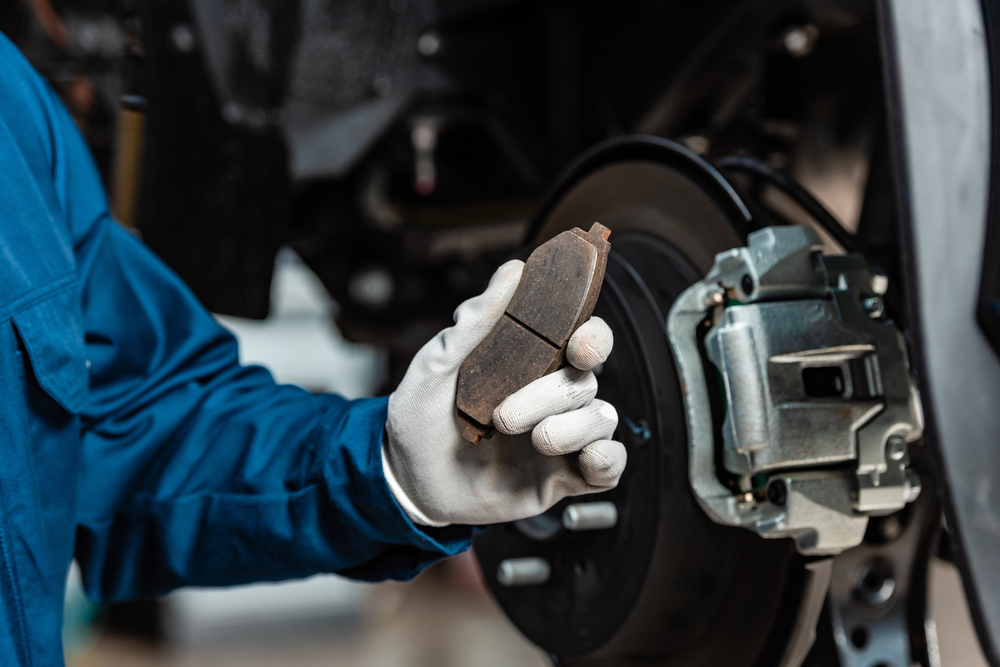How do you check if your brakes are worn?
Valerie Raskovic

Brakes are amongst the most critical safety systems in any vehicle. Your car brakes are responsible for slowing down or stopping, and their condition directly impacts vehicle performance and safety. Given the importance of brakes, it’s essential to understand how to check their life, choose the right type and maintain them to ensure optimal performance. This article will help you understand how your car brakes work and how to check for signs that they are worn and in need of replacement and give tips on how to make them last longer.
Before delving deep into brake maintenance, it’s helpful to understand the basics of how brakes work. Brakes convert the kinetic energy of a moving vehicle into heat through friction, effectively slowing or stopping the car. Most modern cars use disc brakes, consisting of a rotor (a metal disc), brake pads and a caliper. You can think of disc brakes as powerful hydraulic clamps (brake caliper and brake pads) that work to squeeze a spinning wheel (brake disc/rotor). When you press the brake pedal, the caliper squeezes the brake pads against the rotor, creating friction and heat, slowing down the car.
Disc brakes are common because they provide better heat dissipation and stopping power. Older vehicles may have a different style of braking system called drum brakes. Drum brakes are based on the same principle involving friction applied through hydraulic force, but instead of squeezing a brake rotor, drum brakes feature a drum-shaped rotor with brake shoes pressing against the drum’s inner walls. They are less common in modern cars and are generally considered outdated old technology.
Brakes rely on several components, some of which wear down over extended use. Both brake pads and brake rotors are designed to wear down and require replacement. Understanding these basics will help you better assess brake health.
You do not need to be a mechanic in order to check how much life your brakes have left; in fact, you should check your brake condition regularly to ensure effective braking performance.
Performing a basic visual brake inspection on a regular basis can save you from unexpected repair costs and hazards. Most cars have a warning tab that makes a noise when pads are too thin. Visually, you can check the thickness of the brake pads through the wheels. First locate the brake pad located inside the brake caliper and measure the distance of the friction material of the brake pads. This can be done visually or with an actual brake pad thickness measurement tool. As a rule of thumb, the minimum brake pad friction material thickness should always be above 3 mm or 0.12 in. Also, check the rotors or drums; check the outer lip to see how deeply they are worn. If you see a deep lip on the outer or inner part of the rotor outside the brake pad contact area, that is a clear sign the brake pads are in need of replacement. The sure-fire way to know if your brake rotors need replacing is simply by measuring their thickness and comparing that number with the manufacturer-provided specifications.
Be sure to check for uneven wear, hot spots, rust or damage. Listen for sounds as you’re driving and applying and releasing the brakes. Most commonly, squeaking or squealing noises when braking can indicate worn brake pads. This is often due to a wear indicator tab in the pads that makes noise when they’re near the minimum thickness. However, grinding noises are a sign of severe wear and should be addressed urgently. If your brake pedal feels spongy or soft when you press it, it could mean low brake fluid or worn brake pads. A firm pedal indicates proper brake function.
Regularly taking your car to a mechanic for a brake check is wise. A professional can measure the brake pad thickness, check for fluid leaks and assess the overall condition of the brake system.
To extend the life of your brakes, follow these tips:
- Perform Regular Maintenance: Have your brake fluid flushed regularly (usually every 2-3 years) to prevent contamination and ensure proper brake function. Check brake pads and rotors during routine oil changes.
- Adopt Good Driving Habits: Avoid hard braking, especially in city traffic. Smooth, gradual braking helps reduce wear on brakes.
- Replace Pads Before Minimum Thickness: Replace brake pads before they reach the minimum thickness with good quality OEM or OEM-equivalent brand parts. This can help prevent causing further damage to other brake components like rotors, drums and calipers.
- Check for Leaks: Inspect brake lines and hoses for any leaks, which can affect brake performance and fluid levels.
- Choose the Right Brake Type: When replacing your brake pads, consider your driving style. Ceramic brakes offer quieter, smoother stops, while metallic brake pads offer better performance, especially in demanding conditions.
Understanding your car’s brakes, checking their life, choosing the right brake type and maintaining them properly are key to ensuring safety and cost-effectiveness. Regular checks, proper maintenance and choosing the right brake type based on your needs can significantly extend brake life and improve braking performance.
Read more articles

